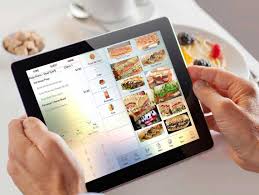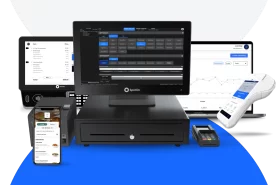Call Today For a Free Demo: 303-309-1218
Email: info@smarterpos.net
POS System Expert in Colorado Discusses the History of POS Systems
The History of POS Systems
 Exchanging money for goods is a tale as old as time. A customer desires a tangible item or service, hand overs a payment method, and boom, it’s theirs. As a customer, you don’t need to worry about anything once the transaction is finished; you simply go on your merry way. For business owner’s in Colorado, however, tracking that transaction is of the utmost importance.
Exchanging money for goods is a tale as old as time. A customer desires a tangible item or service, hand overs a payment method, and boom, it’s theirs. As a customer, you don’t need to worry about anything once the transaction is finished; you simply go on your merry way. For business owner’s in Colorado, however, tracking that transaction is of the utmost importance.
What’s a POS system
A POS, or Point of Sale system, is where the transaction between a merchant and customer gets recorded. These systems provide several functions, the most basic being the ability to link sales to specific items.
 For example, in a traditional cash register system, the employee manually types in an amount, takes the money from the customer and hands back change. POS systems improved that process by integrating revolutionary computer systems with the cash register. Now, that $9.99 item can be tagged as a “T-shirt” in the POS system, so that all the cashier needs to do is press the “T-shirt” button and the computer generates the price. Even simpler, barcode scanners can ring up an order with a quick laser can.
For example, in a traditional cash register system, the employee manually types in an amount, takes the money from the customer and hands back change. POS systems improved that process by integrating revolutionary computer systems with the cash register. Now, that $9.99 item can be tagged as a “T-shirt” in the POS system, so that all the cashier needs to do is press the “T-shirt” button and the computer generates the price. Even simpler, barcode scanners can ring up an order with a quick laser can.
POS systems save time, money, and create infinite possibilities for businesses that were previously unimaginable.
When did POS systems come to market
Early electronic cash registers were introduced in the late 1970s. IBM created early microprocessors that could be tied to point of sale registers, which were slowly adopted by large supermarket chains throughout the States.
Then, in 1974, McDonald’s Restaurants began using an Intel 8088 processor, (the same processor used in early IBM computers), in their food chains. For the first time ever, a cashier could simply touch buttons that were pre-linked to product items, such as “large fries” and “big mac”, to ring up the price. Then, they could hit the “total” button which would automatically calculate and add the tax, take payment, and hand back an itemized receipt.
This may seem mundane now, but it was quite revolutionary at the time. Not only did this help improve service speed and quality, but it gave management a method of tracking the amount of money in the registers at all times via computerized reports.
The evolution of POS technology
In 1986, the first Point of Sale touchscreen systems were invented. Now, instead of having to memorize a number key that was associated with an item (i.e. #5 is “french fries”), the cashier could simply press the “french fries” button on the screen. This was a massive enhancement and helped prevent human error.
Post 1990s
After the 1990s, POS systems exploded with additional features, both on the front and backends. Businesses now had an array of options for processing power, data storage, user interface and networking.
Modern POS systems
 Most POS systems in Colorado today offer, at a basic level:
Most POS systems in Colorado today offer, at a basic level:
- The ability to track sales
- The ability to track inventory
- SKU tracking
- Reporting modules
- Customer loyalty programs
- Bookkeeping and accounting capabilities
Often, POS systems can be customized to fit your businesses needs, and software can be updated at an additional cost.
Point of sale systems have revolutionized the way goods and services are sold, tracked and monitored. They’ve streamlined services and helped business owners work smarter, more organized and creative in the strategies they use to enhance their bottom line.

